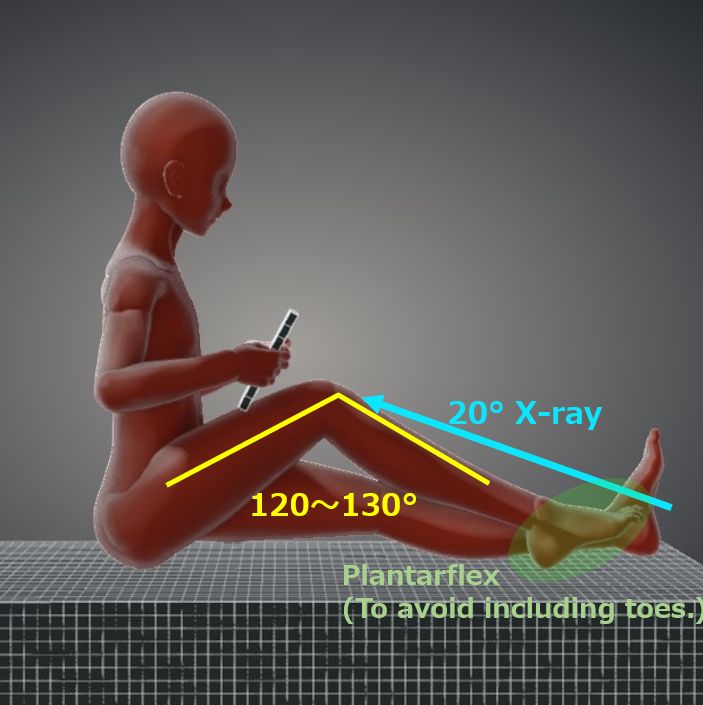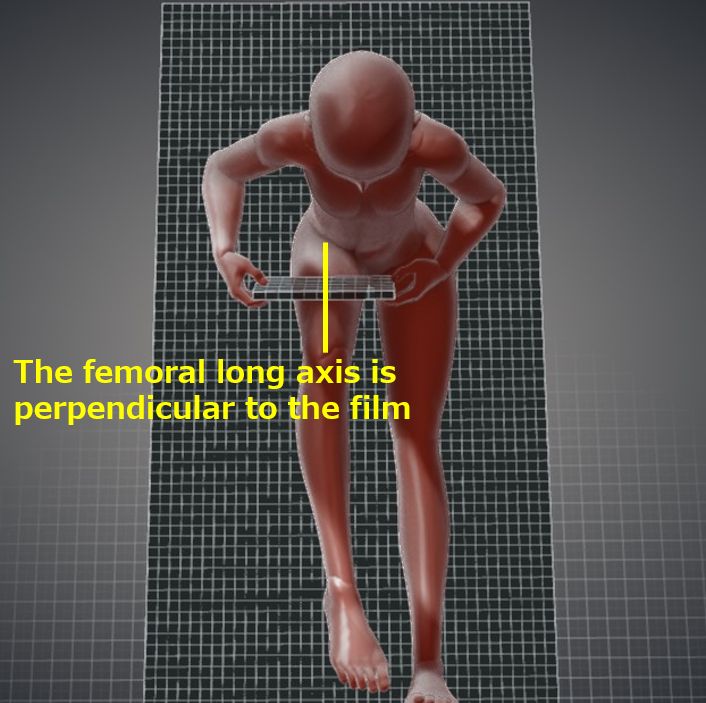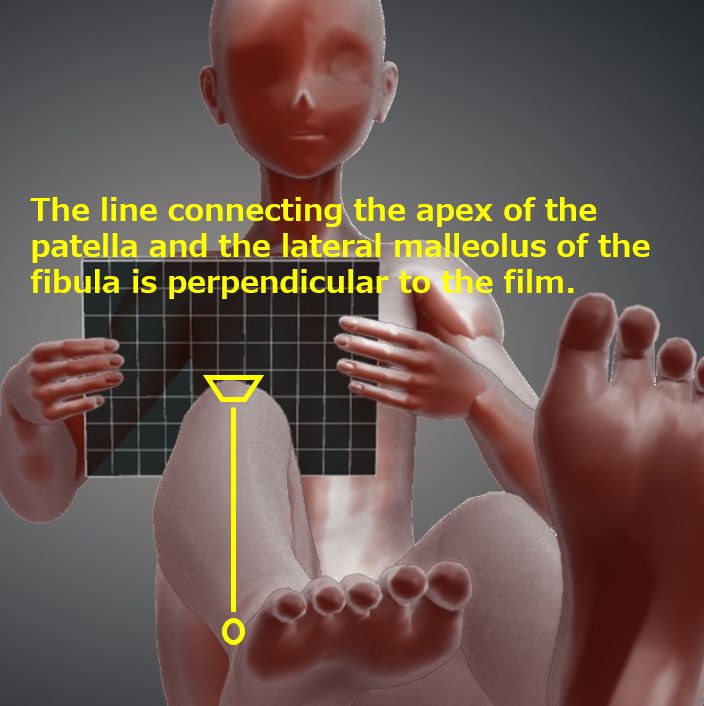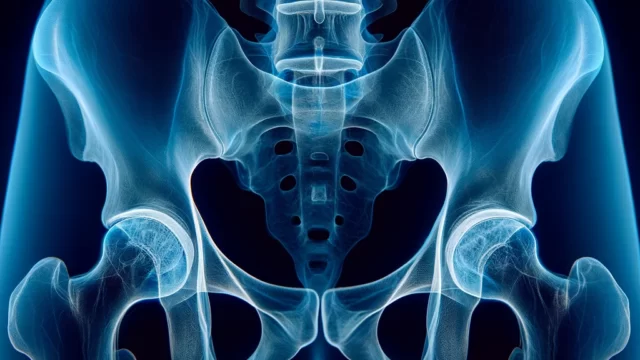Purpose
Observation of patellar dislocation, subluxation and patellofemoral joint.
Preliminary Confirmation
Determine the approximate direction of incidence from the lateral image. (e.g. patella alta)
Remove any obstructive shadows.
Check which side is the affected side.
Positioning
Sitting position. If a cassette stand is available, the patient may be placed in a supine position.
Flex the knee joint on the examining side (30°, 60°, or 90°. follow doctor’s orders).
Position the film so that the patella and femur to be projected are not chipped. The affected leg toe should be plantar flexed so that it is not included in the irradiation field.
The film should be held perpendicular to the direction of incidence.
The line connecting the apex of the patella and thelateral malleolus should be perpendicular to the film.
Place the R or L marker on the film.
CR,distance, field size
CR : Oblique incidence toward the patellofemoral joint in the caudal direction. Angle such that the patellofemoral joint is widely projected (If the knee joint is flexed 60°, the angle will be approximately 20° caudally.) or X-rays are incident at an angle where the shadow of the finger across the patella overlaps the film
Distance : 100cm
Field size : Include patella to tibial tuberosity with room to spare. Minimize left and right sides.
Exposure condition
60kV / 8mAs
Grid ( – )
Image, check-point
Normal (Radiopaedia)
Fracture of patella (Radiopaedia)
The patella doesn’t overlap with the other bones.
The patellofemoral joint is widely observable.
Tibia tuberosity does not overlap the patellofemoral joint and is projected closer to the intercondylar groove.
Videos
Related materials
The Skyline Patella Projection














